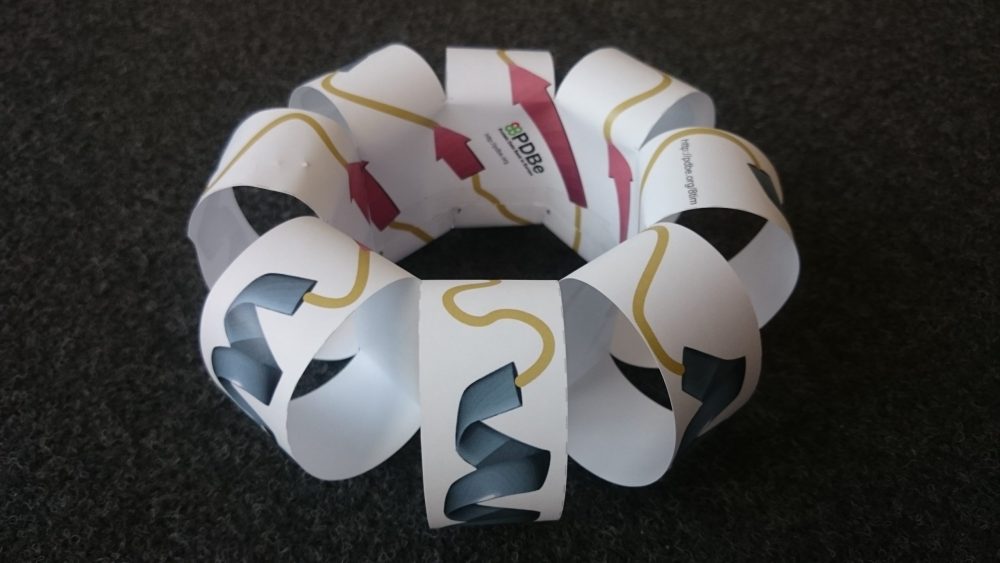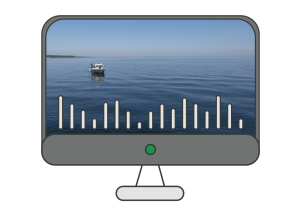
How can you fold a protein?
Introduction
Create your own protein model
Would you like to create your own three-dimensional model of a protein using an A4 paper template?
You can do this by following the instructions to fold a triosephosphate isomerase (TIM) barrel. TIM barrels are some of the most common structural motifs found in proteins. In a TIM barrel eight α-helices and eight parallel β-strands form a solenoid that curves around to close on itself in a doughnut shape. Triosephosphate isomerase is a conserved metabolic enzyme that is involved in the production of chemical energy from sugar, a process called glycolysis.
Materials
Download the TIM barrel folding template here.
Folding tutorial
Folding tutorial
- Cut out protein along dotted lines
- Curl blue helix behind arrows matching the numbers and sticking down.
- Bend tube with red arrows facing inwards to create the barrel. Stick last tab to finish.
Some explanatory pictures accompanying the folding tutorial can be found on the TIM barrel folding template.

Topic area: Structural & Computational biology
Age group: 12-14, 14-16, 10-12, < 10
Author: Alex Bateman, Gary Battle
Share:
 Deutsch
Deutsch Français
Français


